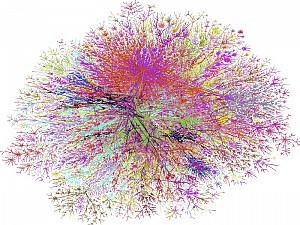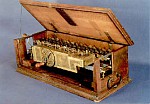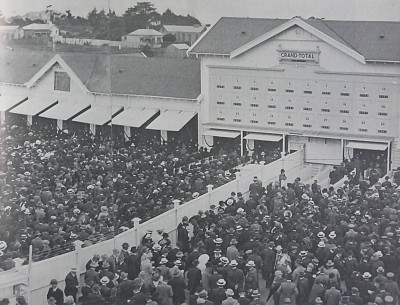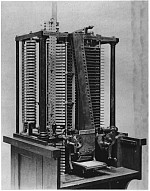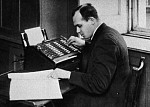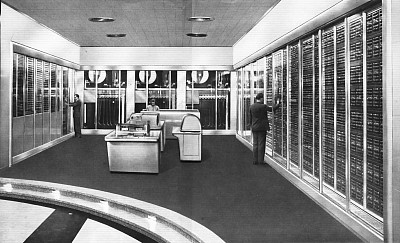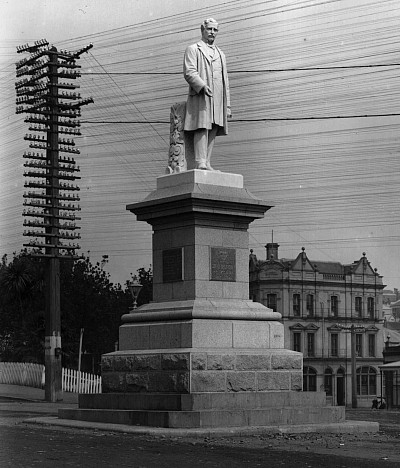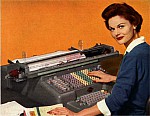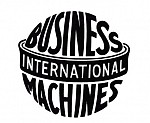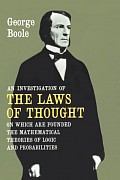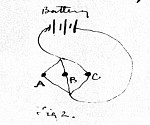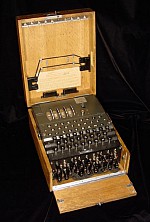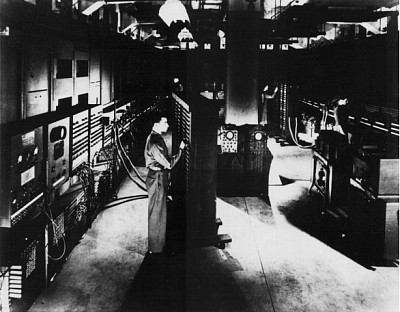Computer Science
Computing History Displays: Computer History Time Line - Precursors of Computers
Since the dawn of time, as he looked at the numberless stars in the sky above his head, man has sought to make sense of the world around him by systems of numbering and counting. As social organisation became more complex, so did computation: five centuries BC, the Greeks were using pebbles as counting aids, a system which prefigured the ancient abaci. But it would be more than 2000 years before the process of computation became mechanised.
The methods of calculation that we have come to call computing have built on a long history of development in mechanical calculation, analogue computation, electrical communication, programmed computation, business data processing, electronics and mathematics, especially logic.
Because of the mental effort required, and the all-too-human tendency to make mistakes, there has long been a demand for machines that can ease the strain of routine arithmetic. The first mechanical machine dates from 1642:
2.1.1 Machines that add ...
Aged only 19, but already a famous mathematician, Frenchman Blaise Pascal invents a machine to help his father to do mathematical calculations. The device consists of a wooden box with sixteen dials which can be turned to do simple addition. Further Images.
2.1.2 ... and multiply
In 1672, a young German lawyer, Gottfried Wilhelm von Leibniz, who, as a mathematician will become co-founder of the calculus, develops an improved automatic calculator which can perform rapid multiplication or division. Wheels placed at right angles are displaced by a special stepping mechanism. The operator has to understand how to turn the wheels - thus know the machine's "programming language". The "Multo" machines used by students in our Statistics Department until the 1960s are a direct descendant.
2.1.3 Calling the odds
In the pre-electronic age, the most complex calculating machines are designed to determine the "odds" on horse races. The first such machine in the world is installed in Auckland at the Ellerslie race course in 1913 by the Sydney-based Automatic Totalisator Company. The automatic totalisator - or "Tote" - is designed by George Julius, the son of Bishop Julius of Christchurch. There is more on the history of the totalisator on the second floor.
Analogue calculators - most commonly slide rules - use physical quantities to represent numbers approximately.
2.2.1 The meccano differential analyzer
Hartree's meccano differential analyzer built on the idea of so-called integrating machines which had been developed in the US but were adopted in the UK by Douglas Hartree. One of Hartree's machines was brought to Auckland in 1950 by Professor Harry Whale for use at the Seagrave Radio Research Centre. This is now on display at the Museum of Transport and Technology at Auckland. You can read about the restoration project here.
Solving problems numerically required computations involving thousands of steps. Extensive calculations were performed by hand, or by using simple machines, with large teams of people involved. The people who calculated were called "computors" and the instructions they followed was their "programme" of work.
2.3.1 Analytical engine
English inventor and mathematician Charles Babbage is the first to see the need for the programming of computation to be mechanised. His Difference Engine, designed in the 1820s, is specifically for building mathematical tables but his later Analytical Engine, developed from the 1840s on, is a general-purpose machine with a program punched on cards. "I wish these calculations had been executed by steam," he told a colleague. There is more on Charles Babbage and his connections to New Zealand on the second floor.
2.3.2 Pioneer venture
L. J. Comrie, a New Zealander from Pukekohe, graduate of this University, who is regarded as an important pioneer in computation, opens the world's first commercial computing bureau in London in 1938. The Scientific Computing Services Bureau uses adapted electromechanical machines for interpolating tables of data, particularly for military use in World War 2. Read more about Comrie in Wikipedia here.
2.3.3 Window display
By the end of the Second World War many externally programmed machines have been developed. Perhaps the most impressive is IBM's Selective Sequence Electronic Calculator (SSEC) which is installed in a shop window in New York's Madison Avenue in 1946. (You can read a brochure describing the SSEC from the collection on the fourth floor.)
Communication media, firstly the telegraph, then telephone and radio, have all been adapted for use for communication to, and between, computers. Indeed, telephone circuits are still the most-widely used means of connecting the home computer to the internet. Television screens provided the first technology for humans to communicate visually with computers.
2.4.1 The world by wire
The telegraph, invented in 1838, is quickly commercialised. The writer Samuel Butler, whose life in New Zealand in the 1860s inspired his novel Erewhon, greets the installation of the telegraph link between Christchurch and Lyttelton with a letter published in the Christchurch Press and signed "Lunaticus", which predicts what we now call the Internet and world wide web:
We will say then that a considerable advance has been made in mechanical development, when all men, in all places, without any loss of time, are cognizant through their senses, of all that they desire to be cognizant of in all other places, at a low rate of charge, so that the back country squatter may hear his wool sold in London and deal with the buyer himself - may sit on his own chair in a back country hut and hear the performance of Israel in Egypt at Exeter Hall - may taste an ice on the Rakaia, which he is paying for and receiving in the Italian opera house Covent Garden. Multiply instance ad libitum - this is the grand annihilation of time and place which we are all striving for ....
The use of machines for storing and processing business data started in the late 19th century. Cash registers from NCR (National Cash Register, later absorbed into AT&T) appeared in 1884 and calculators by Burroughs (which would later merge with UNIVAC to form Unisys) in 1886. Later, data was stored on cards and magnetically. These electro-mechanical and punched card book-keeping machines were in use until the 1970s. The main task of earlier computers was to take-over punched card data-based processing from these older technologies. More Information on the first floor. Further Images.
2.5.1 Punched cards
Herman Hollerith develops punched-card equipment for the 1890 US census. This is the origin of the use of punched cards in data processing.
2.5.2 A giant is born
International Business Machines (IBM) Thomas J. Watson who started with NCR founds CTR (the Computing-Tabulating-Recording Company) in 1911, building on Hollerith's business. IBM, as it becomes in 1920, will come to dominate punched card data processing and later computers.
2.6 Logic
Development of Mathematical Logic over the years gives us the tool to deal with complexity in the design of computer hardware and software. Resolution of questions regarding the logical basis of Mathematics itself leads to an understanding of the capabilities of computers before they even exist. We have a more detailed display on the fifth floor regarding the relationship between Logic and Switching.
2.6.1 Boolean algebra
George Boole (1815-1864) an English mathematician at Queen's University in Cork, Ireland, in his "Laws of Thought" develops a variety of algebra that applies to variables that are restricted to two values, true and false, with the arithmetic operators + and x replaced by the logical operators "or" and "and." His contribution is recognised in the "boolean" variables of programming languages such as Java.
2.6.2 A switch in time
Charles Pierce, an American philosopher, recognises that the operators of Boolean algebra, can be implemented in circuits using switches. Claude Shannon in his 1938 MS thesis at MIT shows how Boolean algebra can be applied to the design of circuits involving switches. Since then, all computers have been designed using logical "gates" constructed from switches, at first using electromechanical relays then, when developed, electronics.
2.7 Electronics
Electronic devices operate at speeds thousands of times greater than mechanical ones. As vacuum-tube technology improved in the first half of the 20th century it was applied to calculation and was a proven technology when needed for computers following World War Two.
2.7.1 The first vacuum tube
In 1906, Lee de Forest invents the triode electronic switch/amplifier that is immediately applied to develop radio. In 1919 the Eccles Jordan flip/flop shows how electronic switches can be used to store data by "toggling" between positions according to their inputs.
2.7.2 Breaking the code
During the World War II special machines are used to assist with breaking the codes of German communications. At Bletchley Park in Buckinghamshire, the "Bombe" machines designed by Alan Turing are used to break the cyphers of the Enigma machine. The most significant machine is the electronic Colossus, developed in 1943 to decrypt the "Tunny" teleprinter codes used by the German high command. Colossus is the first large-scale electronic computing machine. Further Images.
2.7.3 Military muscle
At the University of Pennsylvania a large-scale electronic computing device ENIAC is developed for the military under the direction of Presper Eckert and John Mauchly. It is tested in 1945 by extensive calculations involved in the development of the H-bomb. Further Images.

